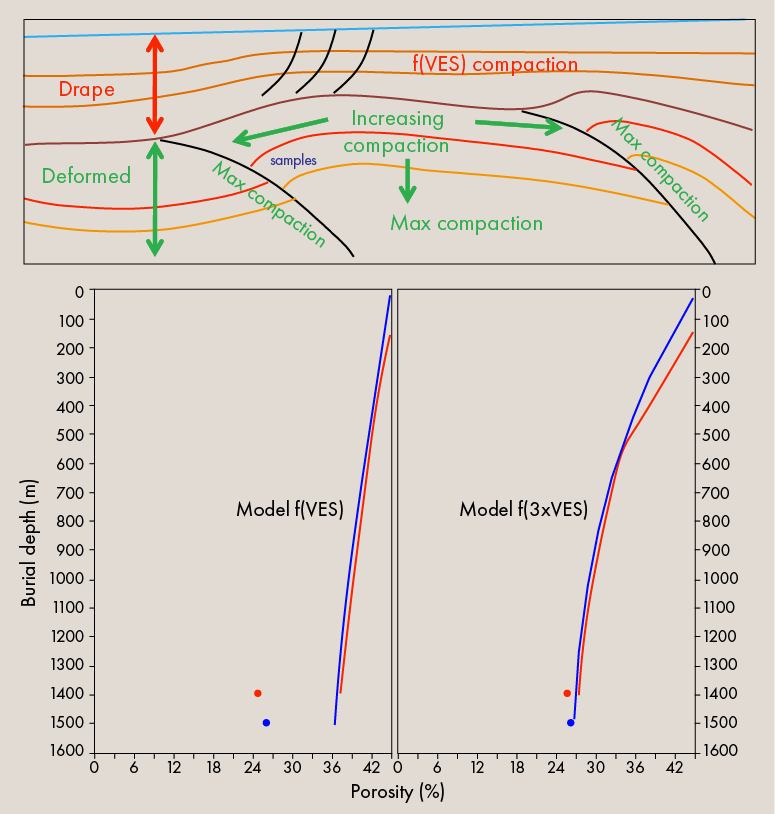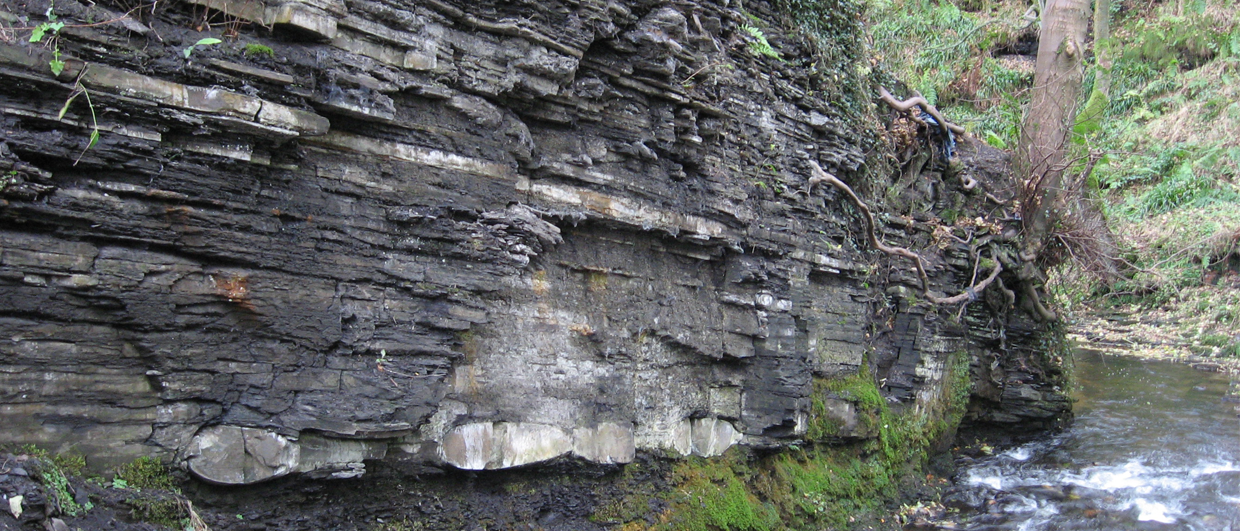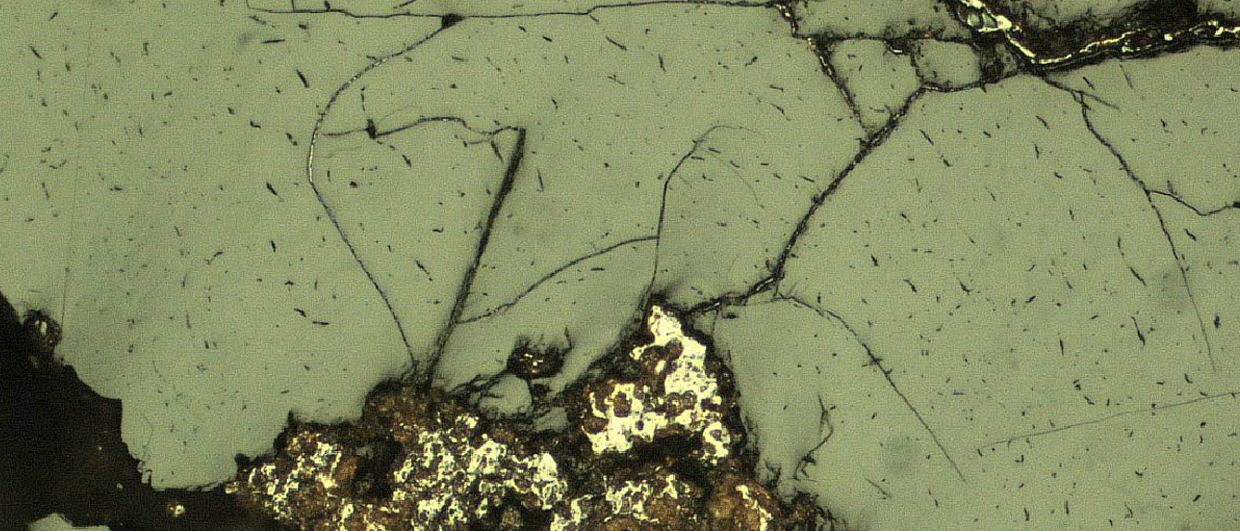Porosity prediction sits at the heart of basin models and prospect evaluation. It underpins our understanding of reservoir quality, pore pressure, and thermal history. Traditionally, porosity has been modelled as a function of burial depth, using compaction curves and vertical effective stress (VES) derived from the overburden load minus pore pressure. This approach has proven reliable in passive margins and extensional settings.
But when explorers drill into fold and thrust belts or accretionary wedges, some may be surprised that sandstones show significantly lower porosities than predicted. The reason lies in lateral stress. In compressional and strike-slip tectonic regimes, lateral stresses rival or exceed vertical stress. Under such conditions, sediments do not just compact under the weight of the overburden – they are squeezed laterally and sheared as well.

A partial analogy illustrates this effect. Imagine filling a jar with flour. Under its own weight, the flour settles to a certain level. Now tap the jar sharply from the side: The grains rearrange, and the flour settles further. Similarly, laterally stressed and sheared sediments compact beyond what vertical loading alone would predict. In geological settings, grains may also fracture, leading to further compaction.
This has been observed in the Orange basin, Appalachian thrust and Nankai accretionary wedge. For instance, at the Nankai wedge, sediments above the basal detachment show 6 – 8 % lower porosity than equivalent normally compacted sediments ahead of the deformation front. Another example is fault rocks and compaction bands in the vicinity of reverse faults.
From a modelling perspective, this is a challenge. Basin models calculate compaction from VES alone. To bridge this gap, one has to consider an “equivalent mean effective stress” (EMES) that reflects all principal stress components. Applied to sandstones in NW Borneo, replacing VES with EMES, effectively increasing stress by a factor of 2 – 3, produced porosity predictions consistent with measured values.
This workaround has practical implications. While current basin modelling tools cannot explicitly simulate lateral shortening, explorationists can approximate the effect by adjusting lithology parameters or scaling VES in compressive and shear settings. The effect is strongest on the thrust fault and decreases with distance from the fault.
On a reservoir scale, properties of faulted rocks are routinely considered, but the fault effect in the adjacent rocks is also important. The compression/shear effect in the bulk rock volume is likely limited near regular reverse faults due to small fault movements (compared to thrust faults), but it can be localized in compaction bands where porosity can drop significantly.
The message is clear: When assessing prospects in compressional regimes, porosity predictions must account for lateral stress. Ignoring it leads to overestimating reservoir quality.





